
Jan Hus, sometimes anglicized as John Hus or John Huss, and referred to in historical texts as Iohannes Hus or Johannes Huss, was a Czech theologian and philosopher who became a Church reformer and the inspiration of Hussitism, a key predecessor to Protestantism, and a seminal figure in the Bohemian Reformation. Hus is considered to be the first Church reformer, even though some designate the theorist John Wycliffe. His teachings had a strong influence, most immediately in the approval of a reformed Bohemian religious denomination and, over a century later, on Martin Luther.
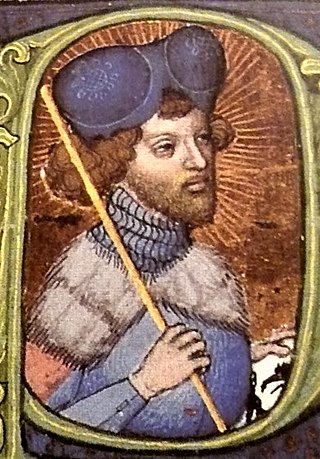
Wenceslaus IV, also known as Wenceslaus of Luxembourg, was King of Bohemia from 1378 until his death and King of Germany from 1376 until he was deposed in 1400. As he belonged to the House of Luxembourg, he was also Duke of Luxembourg from 1383 to 1388.

Charles IV, also known as Charles of Luxembourg, born Wenceslaus, was Holy Roman Emperor from 1355 until his death in 1378. He was elected King of Germany in 1346 and became King of Bohemia that same year. He was a member of the House of Luxembourg from his father's side and the Bohemian House of Přemyslid from his mother's side; he emphasized the latter due to his lifelong affinity for the Bohemian side of his inheritance, and also because his direct ancestors in the Přemyslid line included two saints.
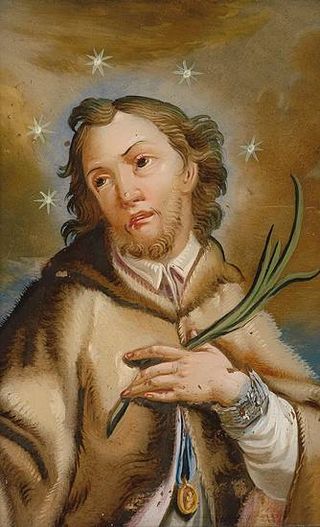
John of Nepomuk was a saint of Bohemia who was drowned in the Vltava river at the behest of King Wenceslaus IV of Bohemia. Later accounts state that he was the confessor of the queen of Bohemia and refused to divulge the secrets of the confessional. On the basis of this account, John of Nepomuk is considered the first martyr of the Seal of the Confessional, a patron against calumnies and, because of the manner of his death, a protector from floods and drowning.
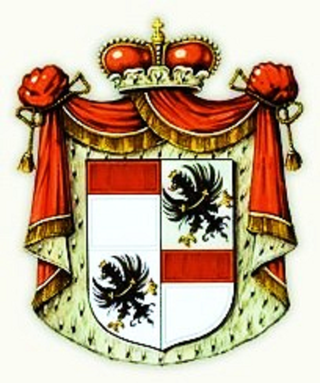
The House of Lobkowicz is an important Bohemian noble family that dates back to the 14th century and is one of the oldest noble families of the region. Over the centuries, the family expanded their possessions through marriage with the most powerful families of the region, which resulted in gaining vast territories all across central Europe. Due to that, the family was also incorporated into the German, Austrian and Belgian nobility.

The Kingdom of Bohemia, sometimes referenced in English literature as the Czech Kingdom, was a medieval and early modern monarchy in Central Europe. It was the predecessor state of the modern Czech Republic.
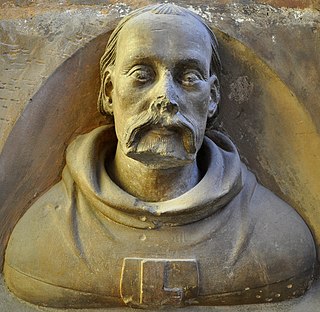
Peter Parler was a German-Bohemian architect and sculptor from the Parler family of master builders. Along with his father, Heinrich Parler, he is one of the most prominent and influential craftsmen of the Middle Ages. Born and apprenticed in the town of Schwäbisch Gmünd, Peter worked at several important late Medieval building sites, including Strasbourg, Cologne, and Nuremberg. After 1356 he lived in Prague, capital of the Kingdom of Bohemia and seat of the Holy Roman Empire, where he created his most famous works: St. Vitus Cathedral and the Charles Bridge.

Sophia of Bavaria was a Queen of Bohemia and the spouse of Wenceslaus, King of Bohemia and King of the Romans. She was briefly interim regent of Bohemia after the death of Wenceslaus in 1419.

Jan Očko of Vlašim, from the family of the House of Vlašim, was the second Archbishop of Prague (1364–1378). He was the uncle to his successor Jan of Jenštejn.
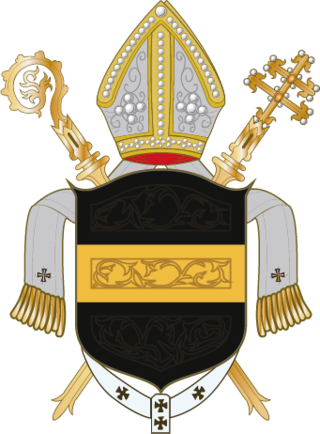
The Archdiocese of Prague (Praha) (Latin: Archidioecesis Pragensis; Czech: Arcidiecéze pražská) is a Metropolitan Latin archdiocese of the Catholic Church in Bohemia, in the Czech Republic.
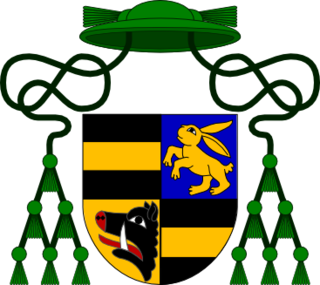
Zbyněk Zajíc of Hazmburk or of Hasenburg was a Czech nobleman, and an important representative of the Roman Catholic Church in the Crown of Bohemia. He was the 5th Archbishop of Prague 1403–1411, succeeding Olbram of Škvorec.
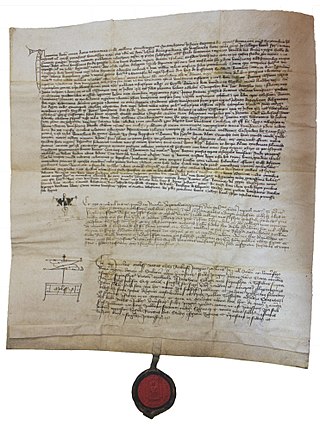
The Decree of Kutná Hora or Decree of Kuttenberg was issued on 18 January 1409 in Kutná Hora (Kuttenberg), Bohemia, by King Wenceslaus IV to give members of the Bohemian nation a decisive voice in the affairs of the Charles University in Prague.
Záviš of Zápy was a Czech theologian and composer.

The Diocese of Hradec Králové is a Latin diocese of the Catholic Church located in the city of Hradec Králové in the Ecclesiastical Province of Prague in the Czech Republic.

The Jenštejn family was a noble family in the medieval Kingdom of Bohemia. The family was founded by a wealthy Prague burgher Pavel. He was listed in 1360 as a royal notary. In 1368, he bought Jenštejn Castle and used the surname z Jenštejna for the first time. He had four sons: Martin, Jan, Pavel and Václav. The most important was Jan of Jenštejn, who following the resignation of his uncle Jan Očko of Vlašim became Prague Archbishop in 1378.

Škvorec Chateau is a chateau, formerly a minor castle, located in Škvorec in the Central Bohemian Region of the Czech Republic, about 23 kilometres (14 mi) east of Prague. The chateau, locally also known as the Starý zámek, was indirectly first mentioned in historical sources in 1279, yet fully documented as late as since 1404. This Gothic castle was rebuilt during the 1520s into a Renaissance palace; but in 1639 – during the devastating Thirty Years' War – the premises were looted, burned and until 1710 laid in ruins. The chateau was restored then, this time in the Baroque style. Between 1860–1884 most of the compound was demolished, leaving only the buildings in south-eastern corner.

Czech Baroque architecture refers to the architectural period of the 17th and 18th century in Bohemia, Moravia and Silesia, which comprised the Crown of Bohemia and today constitute the Czech Republic.

Velišovští z Velišova is a Czech noble family. The family counted politicians, military and ecclesiastical among its numbers. It is related to many other noble families, including Markwartinger, Přemyslid, Waldstein and Wartenberg. All nobles from Wartenberg were laid, except the branch Welischensi, since the race was Weseli the direct lineage of Wartenberg.

The St. Vitus Madonna comes from the treasure of St. Vitus Cathedral in Prague and is exhibited in its original frame in the permanent collection of the National Gallery in Prague.


















